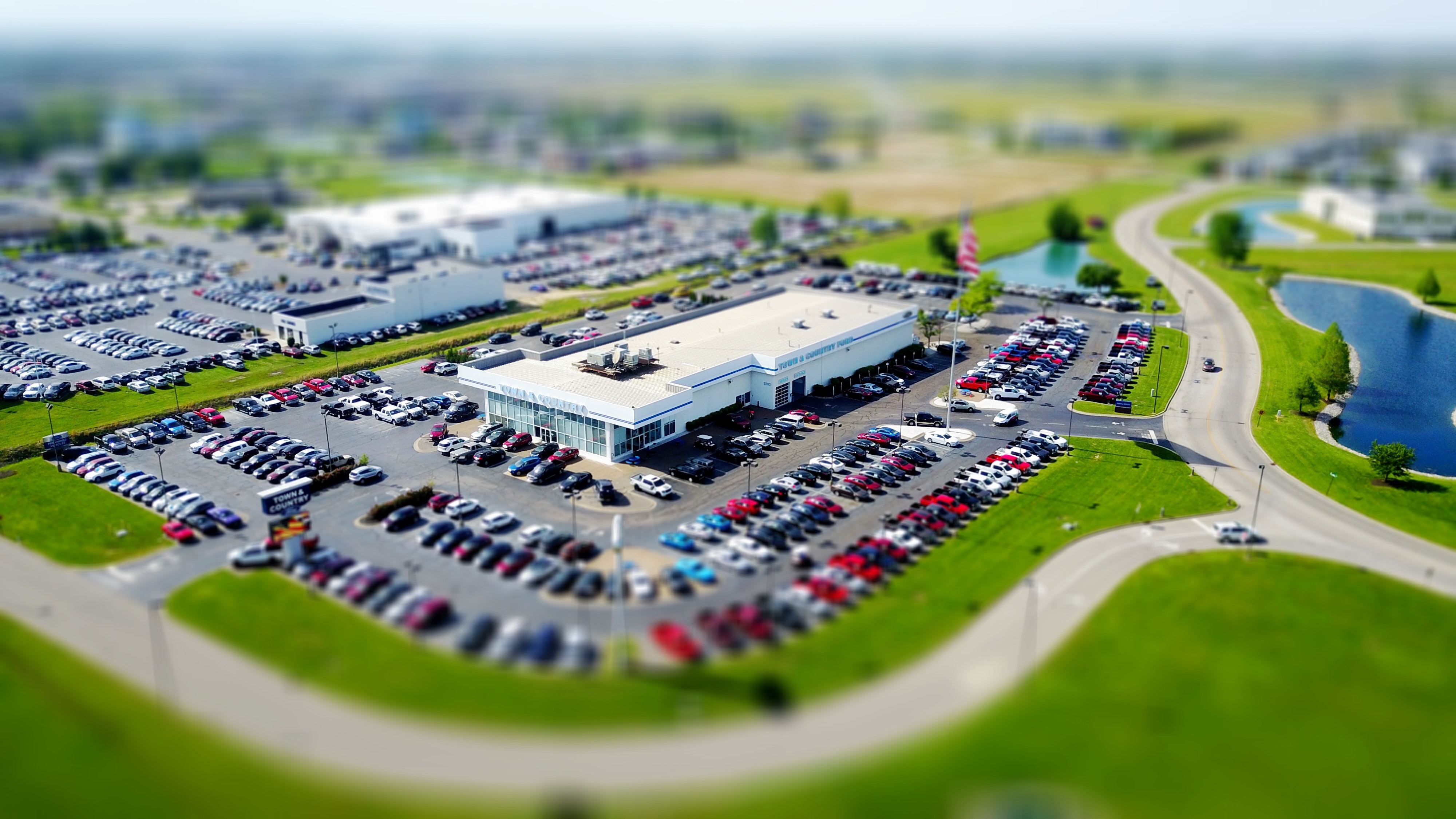The "Road to the Sale" Is Changing
Whether you call it the Sales Journey, Path, Funnel, or Road, a new type of hybrid sales process is emerging when it comes to automotive advertising. The past two years have accelerated this sales trend where buyers only go to a car dealer to finish the deal after completing their research online.
This acceleration is due to the Covid pandemic hindering in-store shopping. The pandemic made buyers become comfortable online shopping versus in-store. Primarily the millennials, the demographic that prefers online purchasing regardless. With the increase in valuable buyers meeting demand, the millennial demographic and seemingly more are becoming critical to the market.
Potential car buyers still want to see the vehicle (75%) and test drive it (64%) before they buy, but have little interest in the rest of the dealership experience, e.g., on-site negotiating (38%). Only 54% of those 18-35 still want in-person transactions at all. (Deloitte's 2021 Global Automotive Consumer Study).
Many manufacturers are developing online retail platforms to bring all possible parts of the sales process online (some parts of the buying process are challenging to digitize) - Nissan@Home and Honda's Shop Simple, for example. Your dealers and your actual customer, will remain essential but are tied more and more to only the last mile of the "Road to the Sale."
In the Omnichannel and marketing system, all consumer interactions are between you and your dealers' online presentation until the finalized purchase. By way of example, any advertising, websites, search, social media, and e-commerces, are your only "face" to the customer.
Just as customers dislike interacting with many different faces at a dealership, your online look must be consistent, seamless, and personalized. All parts of your Omnichannel marketing must be a personalized online experience with your brand.
Your media planning should also be Omnichannel to support and enhance your sales system at each touchpoint.
Traditional/Digital/Hybrid Media
As automotive advertising has evolved over the years, so, too has the marketer’s strategy when it comes to using media.
The biggest and best screen in your customers' house is the TV, capable of showing your product dramatically and in motion, as can Cinema.
- Out-of-Home can show the cars' styling, with heavy frequency, near your dealerships.
- Print can show the styling, features, and specs and associate your brand with the aspirational nature of the magazine itself.
- Newspapers and radio are 'shopped' by buyers looking for deals. They can tie your brand with the local community and Media, and Event Sponsorships associate your brand to specific demographic audiences with like-minded lifestyles and attitudes.
The next layer of media contains a suite of targeted, trackable digital offerings and allow a fuller interaction with the potential car buyers who are likely in the research phase of their purchase.
There are also hybrid media opportunities that can give traditional media more digital capabilities, e.g., CTV, OTT, and digital radio can all be clickable to begin a dialogue.
Reach Buyers Anywhere on the Road Through Omnichannel Media
You must establish trust in your brand and get your vehicles on the "consideration list" accessible through online research. You must show your brands in the most enticing way to begin or continue engagement. But each medium works differently. For example, an SEM text ad offer will only get a response from someone who's already chosen your brand and is prepared to buy your car now. They chose your brand because of your other media and the different communication strengths they bring.
The traditional and hybrid media will reach potential customers at all stages of the purchase process, e.g., those not in the market to those ready to buy now. The reach of those early in the purchase process is an investment in building brand trust, getting on the "list" later, and reminders to take the next step. But they also reach those potential car buyers who are further down the path to purchase. It would help make it easy for those in the research phase to go to your digital assets to begin a dialogue. The research phase can last 12 weeks or more, and the buyers want to control the pace of the conversation. You must customize your interactions on their terms and ensure that they can reach you or your dealers anytime on any platform, and present consistent messaging and support tailored to the customer.
This mix of traditional, hybrid, and pure digital media, using the particular strengths of each medium but always connected or driving to your digital assets, is Omnichannel media planning.
Omnichannel Vs. Multi-channel?
Omnichannel media planning differs from 'multi-channel' in this aspect. Every channel with a sales/marketing presence is not just multi-channel. It is different in that the interactions you have are all consistent and can be seamlessly moved to any other channel when the buyer is ready, with the same user experience whether the user is at the start or near the end of the buying process.
A key benefit of Omnichannel media planning is that once your audience navigates online, they are always only one click away from your website, blog, social media page, for example. The easiest way to drive to your Facebook page is an ad on that platform.
Start a Dialogue and Track Your Buyers
Another benefit is that once you begin interacting with a customer, you can track them across the web and use the data to determine their likelihood to buy, to buy soon, their demographics, lifestyles, and media habits to tailor your messages to each buyer.
You can also easily aggregate, interpret and forward this information to the car dealer to better arm them for a possible final sale and use it to fine-tune your media plan, social media posts, blog content, and SEO, as examples. And especially important with the coming changes to 3rd party cookie policies. Omnichannel planning also delivers a higher reach of your target just by being everywhere the buyer is versus focusing on fewer media.
Start Omnichannel on Your Own Digital Assets First
Because an omnichannel approach requires a universal branding message across all channels, it only makes sense to first develop your automotive advertising campaign message on your website and social media platforms. Make sure you post consistently and connect with users who contact you via those channels.
So, if you have a blog on your website, post routinely with current, SEO-driven content as making an appearance on a Google search is paramount; 87% of potential car buyers said Google helped them with their most recent car purchase. You could also add a manufacturer-produced video to your website as 85% of consumers who viewed an online video followed that viewing up with a conversion action (i.e., set up a test drive, signed up for a price quote, found a local car dealer).
If you have a Facebook or Instagram account, post daily and make sure each platform has equal treatment as social media users will notice a discrepancy. It's also essential that your digital advertising efforts are optimized for mobile as 60% of potential car buyers use their smartphones as a marketing touchpoint.
The point is to nail down your digital plan and move to other channels once you've gained some momentum and knowledge.
Here are some omnichannel ideas to reach buyers and begin a digital dialogue with them:
- OOH: Billboards, bus shelters, and resto-bar ads, among others, are a cost-effective way to reach your target and show styling. Adding a QR code to the poster or Geo-fencing will add a digital advantage.
- Television: Linear television develops tremendous reach while showing your brand in its best light. Smart television offers more targeted messaging and easier transfers to digital communication with buyers. Adding a QR code to either will make starting a digital conversation even more effortless.
- Radio: Streaming, podcasts, and radio have become a successful automotive advertising platform where automobile companies are "connecting authentically with the consumer."
- Print: Print advertising shows your product beautifully to an upscale audience; it reaches your target when they are particularly attentive or in a medium 'shopped' by car buyers. Add a QR code to send the reader to any of your digital assets, e.g., the nearest dealer's inventory.
- Sponsorship Marketing: Working with sports leagues and musical event promoters ties your brand to events that are important to people in your community (53% of consumers are more likely to pursue a brand after seeing it at a sponsorship event.
The future of automotive advertising and media planning lies in using many of the above channels. An omnichannel media planning approach centers on all things 'customer': the customer experience, customer engagement, and the customer journey. It is the best path forward for the automotive industry, which benefits from a guiding hand.
MBI: Your Guiding Hand
Are you looking to integrate an omnichannel advertising approach to your industry but are unsure how to start? If so, the experts at MBI can be your guiding hand as you navigate this new marketing terrain.
With over 31 years on the forefront as media strategists and buyers, our acumen for developing a media plan and maximizing your advertising budget is unparalleled. Contact us today to connect with one of our skilled media strategists and witness firsthand how going "all in" is the right fit for you.

